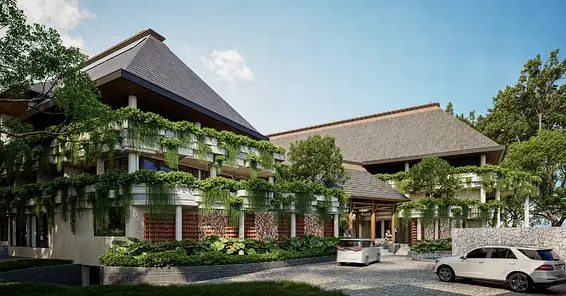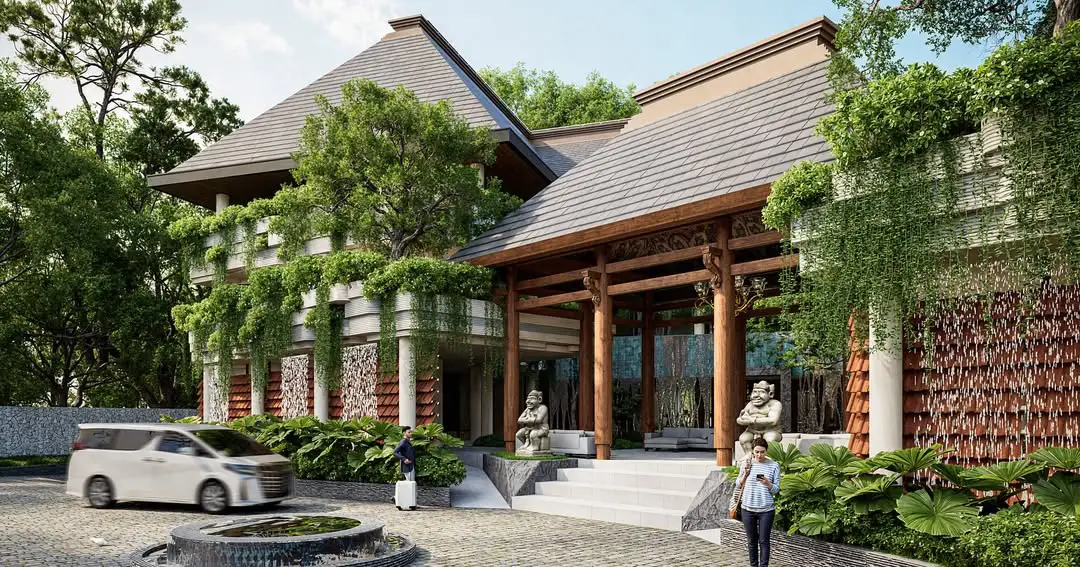
In today’s world, sustainable architecture is becoming more than just a buzzword. As the demand for eco-friendly designs grows, sustainability in architecture is reshaping the way we approach building plans.
It is no longer just about creating functional and aesthetically pleasing spaces, but also about integrating features that reduce environmental impact and improve the overall quality of life.
In today's article, Manon will explore this topic below, so keep reading for insights that could transform your space!
What Is Sustainable Architecture?
It refers to the practice of designing buildings that prioritize environmental responsibility and resource efficiency.
This approach involves many things, including:
- Creating structures that minimize their impact on the planet
- Using energy-efficient systems
- Renewable materials
- Designs that reduce waste
At its core, these design elements aim to reduce carbon footprints and help buildings function in a way that benefits people and the environment that includes features like solar panels, green roofs, and energy-efficient HVAC systems.
Key Principles of Sustainable Architecture

1. Energy Efficiency
This is one of the pillars of green architecture. Buildings consume a significant amount of energy for heating, cooling, and lighting, and by designing spaces with energy-efficient features, such as:
- High-performance insulation
- Energy-efficient windows
- Passive solar design
- Smart building system
These measures help us lower energy costs, dramatically reduce overall consumption and environmental impact.
In fact, the International Energy Agency (IEA) reports that energy-efficient buildings can reduce energy consumption by up to 80%, making them an essential part of the fight against the climate crisis.
2. Use of Renewable Resources
Another core principle is the use of renewable resources. This includes sourcing building materials that are sustainable, locally produced, recycled, or made from renewable sources to reduce the carbon footprint like bamboo, reclaimed wood, and other low-impact materials.
Prioritizing these materials help to lower the environmental impact of construction while supporting a circular economy. Also, reducing the need for resources that contribute to deforestation and pollution.
Moreover, integrating renewable energy sources like solar panels, wind turbines, or geothermal heating into a building’s design is becoming standard practice, ensuring long-term sustainability.
3. Indoor Air Quality and Health
Sustainability in architecture also focuses on improving indoor air quality, which is crucial for the health and well-being of building occupants. Sustainable buildings prioritize clean, fresh air through the use of non-toxic paints, low-VOC materials, and advanced ventilation systems.
The World Health Organization (WHO) highlights the importance of IAQ (Indoor Air Quality) in creating healthier living environments, noting that poor air quality can lead to respiratory issues, allergies, and other health problems.
This focus on indoor air quality has been shown to reduce respiratory issues and improve overall health, especially in urban areas where pollution can be a problem.
How Sustainable Architecture Transforms Building Plans

Sustainability in architecture significantly impacts traditional building plans by making eco-friendly features a primary consideration in the design phase.
Traditionally, sustainability may have been added as an afterthought or a separate element. However, it is integrated into every aspect of the design, from material selection and building orientation to energy systems and waste management.
For example, the positioning of a building can maximize natural light and passive solar heat gain, reducing the need for artificial lighting and mechanical heating. Materials that reduce environmental impact such as recycled steel, sustainable timber, and energy-efficient insulation are chosen for their durability and their ability to function, environmentally and economically sustainable.
Additionally, integrating sustainable systems like solar panels, rainwater harvesting, and energy-efficient HVAC systems means that these buildings are designed to not only be environmentally responsible but also cost-effective over time.
Why Sustainable Architecture Matters
Adopting sustainability in architecture is crucial for several reasons, such as:
1. Tackling Climate Crisis and Resource Depletion
The building sector is one of the largest contributors to carbon emissions, making the shift to sustainable design vital for reducing our environmental impact.
2. Long-Term Financial Benefits
On a practical level, sustainable architecture offers long-term financial benefits.
For example, green buildings are shown to save as much as 25% in energy costs, and they often command higher property values. In addition, these buildings tend to have lower maintenance costs and longer lifespans, making them a smart investment in the future.
3. Enhancing Health and Well-Being
Sustainable buildings also contribute to the health and well-being of their occupants. Research by the Harvard T.H. Chan School of Public Health has shown that indoor environmental quality significantly impacts cognitive function, productivity, and overall health.
By improving indoor air quality and ensuring that buildings are designed with wellness in mind, sustainability in architecture enhances the lives of those who live and work in these spaces.
Leading the Way in Sustainable Architecture With Manon
At Manon Design Studio, we specialize in integrating sustainable building principles into every project we undertake. Founded in 2021 by architect Brahasata Indra, our studio is committed to creating spaces where nature and people coexist harmoniously.
We focus on crafting buildings that not only meet the needs of the occupants but also respect the environment and contribute positively to the community. With our expertise in green architecture, we guarantee every design is carefully thought out, using renewable resources, energy-efficient systems, and green technologies.
Reach out to us for your sustainable architecture projects now!
